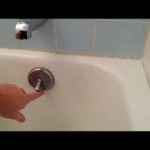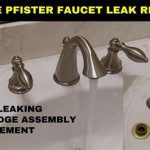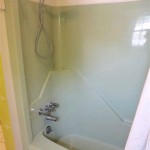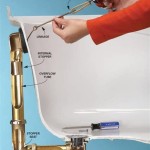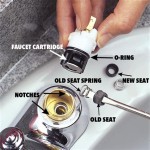How Much Does It Cost To Replace a Bathtub With a Walk-In Shower?
Replacing a standard bathtub with a walk-in shower is a popular home renovation project that can significantly increase a bathroom's accessibility, safety, and aesthetic appeal. However, before embarking on this project, it's essential to understand the costs involved. The total cost can vary widely depending on numerous factors, making it crucial to plan and budget accordingly. This article explores the various components that contribute to the overall expense of replacing a bathtub with a walk-in shower, providing a comprehensive overview of what to expect.
The price range for this type of renovation can be broad, generally falling between $3,000 and $15,000 or even higher. This substantial range reflects the diverse options available in terms of materials, complexity of installation, and labor costs. Understanding the individual components of this cost will allow homeowners to make informed decisions and potentially manage expenses effectively.
Factors Influencing the Cost of Bathtub to Walk-In Shower Conversion
Several key factors directly impact the overall cost of converting a bathtub into a walk-in shower. These factors range from the demolition and removal of the existing tub to the selection of shower features and any necessary plumbing or electrical work. Careful consideration of these elements is crucial for accurate budgeting and project planning.
1. Demolition and Removal: The first step involves removing the existing bathtub. This process typically includes disconnecting plumbing, detaching the tub from the surrounding walls and floor, and hauling it away. The cost of demolition and removal can vary depending on the type of tub, its weight, and the ease of access to the bathroom. Expect to pay between $100 and $500 for this initial phase.
2. Shower Base and Enclosure: The shower base is a foundational element of the walk-in shower. Options range from prefabricated acrylic or fiberglass bases to custom-built tile bases. Prefabricated bases are generally more affordable, costing between $300 and $1,500, while custom tile bases offer greater design flexibility but can cost upwards of $1,000 to $3,000 or more, considering the cost of materials like tile, waterproofing membrane, and labor. The enclosure, which surrounds the shower area, can consist of glass doors, glass panels, or a combination of both. Glass doors can range from $500 to $2,000 or higher depending on the thickness, style (hinged, sliding, or frameless), and any special coatings.
3. Plumbing and Electrical Work: Converting a bathtub to a walk-in shower often requires modifications to the existing plumbing. This might include relocating the showerhead, adding new water lines, or adjusting the drain. If you are adding features like body sprays or a rain showerhead, more extensive plumbing work will be necessary, further increasing costs. Similarly, electrical work may be required if you plan to install lighting inside the shower or add a powered shower seat or other electrical fixtures. Plumbing costs can range from $500 to $2,000, and electrical work can add an additional $200 to $1,000 or more depending on the complexity of the project.
Material Choices and Their Impact on Price
The materials selected for the walk-in shower significantly influence the overall cost. From the shower base to the wall surround and fixtures, a wide range of options are available, each with its own price point and aesthetic appeal.
1. Shower Base Materials: As mentioned previously, prefabricated bases made from acrylic or fiberglass are cost-effective options. These materials are durable, easy to clean, and come in various sizes and shapes. However, they may not offer the same level of customization as a tile base. Custom tile bases allow for greater design flexibility and can enhance the visual appeal of the shower. Tile options range from ceramic and porcelain to natural stone, each with varying costs. Porcelain tiles are a popular choice due to their durability, water resistance, and affordability, while natural stone tiles like marble or granite offer a luxurious aesthetic but come with a higher price tag and require more maintenance.
2. Wall Surround Materials: Similar to the shower base, the wall surround can be constructed from various materials, including acrylic, fiberglass, tile, or solid surface materials like Corian. Acrylic and fiberglass surrounds are cost-effective and easy to install, but they may lack the visual appeal of tile or solid surface options. Tile surrounds offer a wide range of design possibilities, allowing for intricate patterns and custom designs. Solid surface materials provide a seamless, non-porous surface that is easy to clean and maintain. The cost of wall surround materials can range from $200 to $3,000 or more, depending on the material and the size of the shower.
3. Fixtures and Hardware: Showerheads, faucets, handles, and other hardware contribute to both the functionality and aesthetic of the walk-in shower. Basic showerheads can cost as little as $50, while more advanced options like rain showerheads or multi-function showerheads can cost several hundred dollars or more. Faucet sets can range from $100 to $500 or more, depending on the style and finish. The choice of finish, such as chrome, brushed nickel, or oil-rubbed bronze, can also impact the cost. Investing in high-quality fixtures and hardware can improve the overall experience and longevity of the walk-in shower.
Additional Considerations and Potential Costs
Beyond the core components of the walk-in shower, several additional factors can influence the project's overall cost. These include labor costs, accessibility features, potential structural modifications, and unexpected issues that may arise during the renovation process.
1. Labor Costs: Labor costs typically account for a significant portion of the overall expense. Hiring a licensed and experienced contractor is crucial to ensure that the work is done correctly and complies with local building codes. Labor costs can vary depending on the contractor's experience, the complexity of the project, and the geographical location. Expect to pay between $50 and $150 per hour for skilled tradespeople such as plumbers, electricians, and tile installers. Obtaining multiple quotes from different contractors is recommended to compare prices and ensure you are getting a fair estimate.
2. Accessibility Features: One of the primary reasons for converting a bathtub to a walk-in shower is to improve accessibility. Incorporating features like grab bars, a built-in seat, and a low-threshold entry can make the shower safer and more comfortable for individuals with mobility issues. Grab bars can range from $50 to $200 each, depending on the style and material. A built-in seat can add $200 to $500 or more to the cost, depending on the size and material. Low-threshold entries minimize the risk of tripping and can add to the overall cost of the shower base. These accessibility features can significantly enhance the functionality and safety of the walk-in shower.
3. Structural Modifications: In some cases, converting a bathtub to a walk-in shower may require structural modifications to the bathroom. This could include moving walls, reinforcing the floor, or addressing plumbing issues hidden behind the existing tub. Structural modifications can add significantly to the overall cost and may require permits and inspections. It's important to have a thorough inspection of the bathroom before starting the project to identify any potential structural issues.
4. Permits and Inspections: Depending on the scope of the project and local regulations, permits may be required for plumbing and electrical work. The cost of permits can vary depending on the location and the type of permit. Inspections are typically required to ensure that the work complies with building codes. Failing to obtain the necessary permits and inspections can result in fines and delays. It's the homeowner's responsibility to ensure that all permits are obtained and that the work is inspected.
5. Unexpected Issues: During the demolition process, unexpected issues may arise, such as water damage, mold, or outdated plumbing. Addressing these issues can add to the overall cost and delay the project. It's important to have a contingency budget to cover unexpected expenses. A good rule of thumb is to set aside 10% to 20% of the total project cost for contingencies.
In conclusion, replacing a bathtub with a walk-in shower involves numerous factors that contribute to the overall cost. By understanding these factors and planning accordingly, homeowners can make informed decisions and potentially manage expenses effectively. Getting multiple quotes, carefully selecting materials, and being prepared for the unexpected are essential steps in ensuring a successful and cost-effective bathroom renovation.

How Much Does A Tub To Shower Conversion Cost

How Much Does A Tub To Shower Conversion Cost 2025 Angi

2025 Tub To Shower Conversion Cost Walk In Stall

Walk In Tub Shower Combo Cost By Size Features And Other Options

How Much Does A Shower Remodel Cost In 2024 Planner 5d

Master Bathroom Renovation Converting A Bathtub Into Walk In Shower Our Handcrafted Life

2025 Shower Installation Cost Walk In Replacement

How Much Does It Cost To Replace A Tub Bathroom Pros Nj

Shower Remodel Cost 2025 Calculator Ranges

How Much Does A Shower Remodel Cost In 2025 Angi
Related Posts

